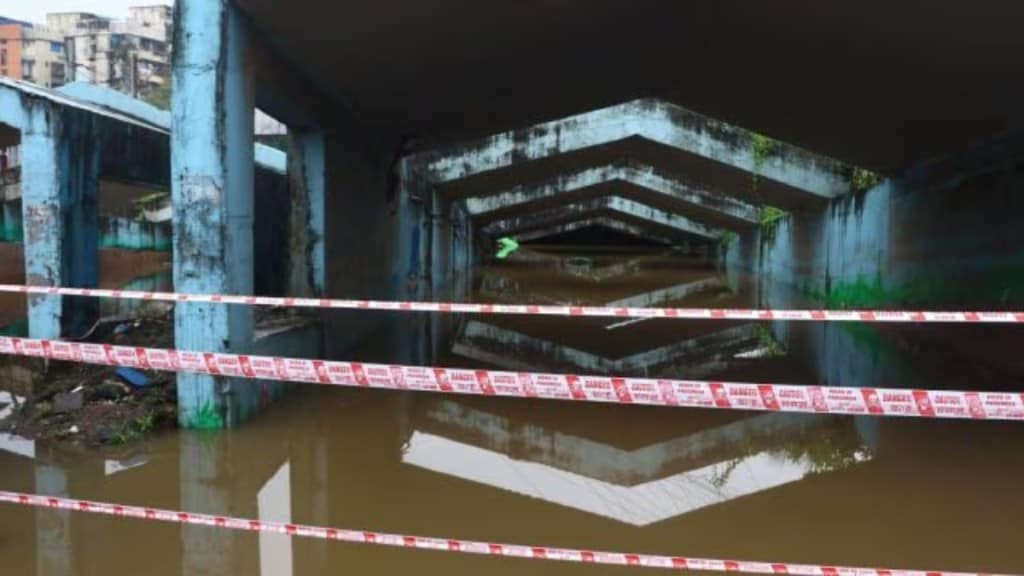With heavy rainfall pouring over Mumbai, various parts in Navi Mumbai have been submerged in water. Amid this, the Navi Mumbai Municipal Corporation has acknowledged that certain holding ponds have become non-functional due to silt buildup and the presence of mangroves, The Indian Express reported. Navi Mumbai was engineered to be flood-resistant through the use of Dutch technology, featuring a network of holding ponds.
Now, the authorities are working on finding ways to restore holding ponds in partnership with IIT Bombay. “The holding ponds in some areas have become dysfunctional due to accumulation of silt and presence of mangroves.
An unusual amount of rain in the city in a short period, along with high tide, has worsened the situation, making it difficult for the authorities to drain out water efficiently, Commissioner of NMMC, Dr. Kailas Shinde, said.
“While we ensure that the nullahs are cleaned regularly, they have a certain capacity, and the volume of water entering them during such heavy rainfall is beyond what they can handle,” he added.
What are holding ponds?
The holding ponds are designed to block seawater during a high tide while holding rainwater from storm drains. They are equipped with flap gates. As the tide recedes, the gates open to drain water into the sea. However, despite these flood prevention measures, several areas in Vashi still faced waterlogging.
With the flooding, concerns have been raised about the city’s infrastructure. BN Kumar, Director of NatConnect Foundation and an environmentalist, stated that the flooding is a result of clogged stormwater drains, especially in sectors 9 and 10 of Vashi.
“The redevelopment activity in these sectors has led to large-scale digging and debris from construction sites flows into the drains during heavy rain, causing blockages,” he said.


